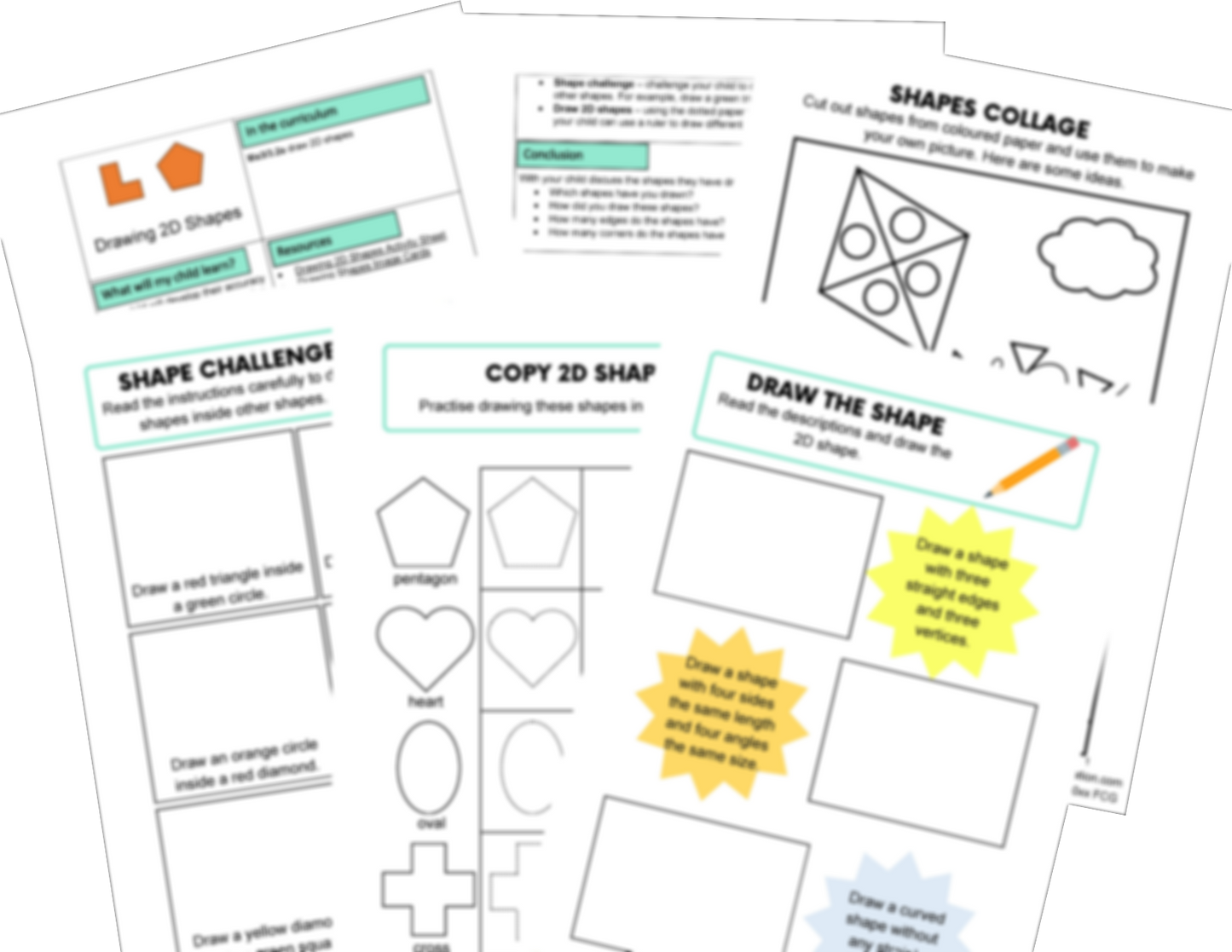Year 3 Properties of Shapes
Year 3 Properties of Shapes
PDF Content - no shipping
Couldn't load pickup availability
Discover the properties of 2D shapes with this comprehensive Year 3 maths pack!
This engaging resource introduces geometry through hands-on activities and creative investigations. Perfect for Year 3 learners, children will develop understanding of shape properties, angles, and position while building spatial awareness and geometric vocabulary.
What's Included:
- Drawing 2D Shapes - Practise drawing shapes accurately using rulers and templates
- Modelling Shapes - Create 2D shapes using playdough, straws, or other materials
- Identifying Polygons - Learn to recognise and name different polygons
- Angles In Shapes - Explore right angles and other angles within shapes
- Turn The Spinner - Investigate turns and angles through games
- Turning Shapes - Explore rotation and position of shapes
- Lines In My Name - Identify horizontal, vertical, and diagonal lines in letters
Learning Benefits:
- Supports Year 3 National Curriculum maths objectives for geometry
- Develops understanding of shape properties and characteristics
- Builds geometric vocabulary including polygon names and angle types
- Encourages spatial reasoning and visual thinking
- Makes abstract geometric concepts concrete through hands-on modelling
- Promotes accurate drawing and construction skills
- Perfect for introducing angles and position concepts
- Includes varied activities to consolidate understanding
Ideal for: Teachers, home educators, and parents teaching Year 3 maths and introducing shape properties to KS2 children.
Download instantly and explore the world of shapes!













Hands-On Education presents a comprehensive Y3 Maths topic on Properties of Shapes, featuring seven engaging lesson plans that include worksheets and activities. The lessons cover drawing 2D shapes, modeling shapes, identifying polygons, exploring angles, and activities like "Turn The Spinner" and "Lines In My Name." This hands-on approach allows students to physically manipulate objects and engage with mathematical concepts in a concrete manner, fostering deeper understanding and real-world connections. By promoting problem-solving skills and collaboration, these activities enhance students' mathematical abilities while creating an interactive and memorable learning experience.
Thinking about full access? Get HOE+

Get full KS1 and KS2 access to Hands-On Education today!
Gold Annual Membership
Gain complete access to all our existing and future topics with this amazing all inclusive money saving option. For one low annual price of £65 or a monthly price of only £7. Get all key stage one and two topics today!












